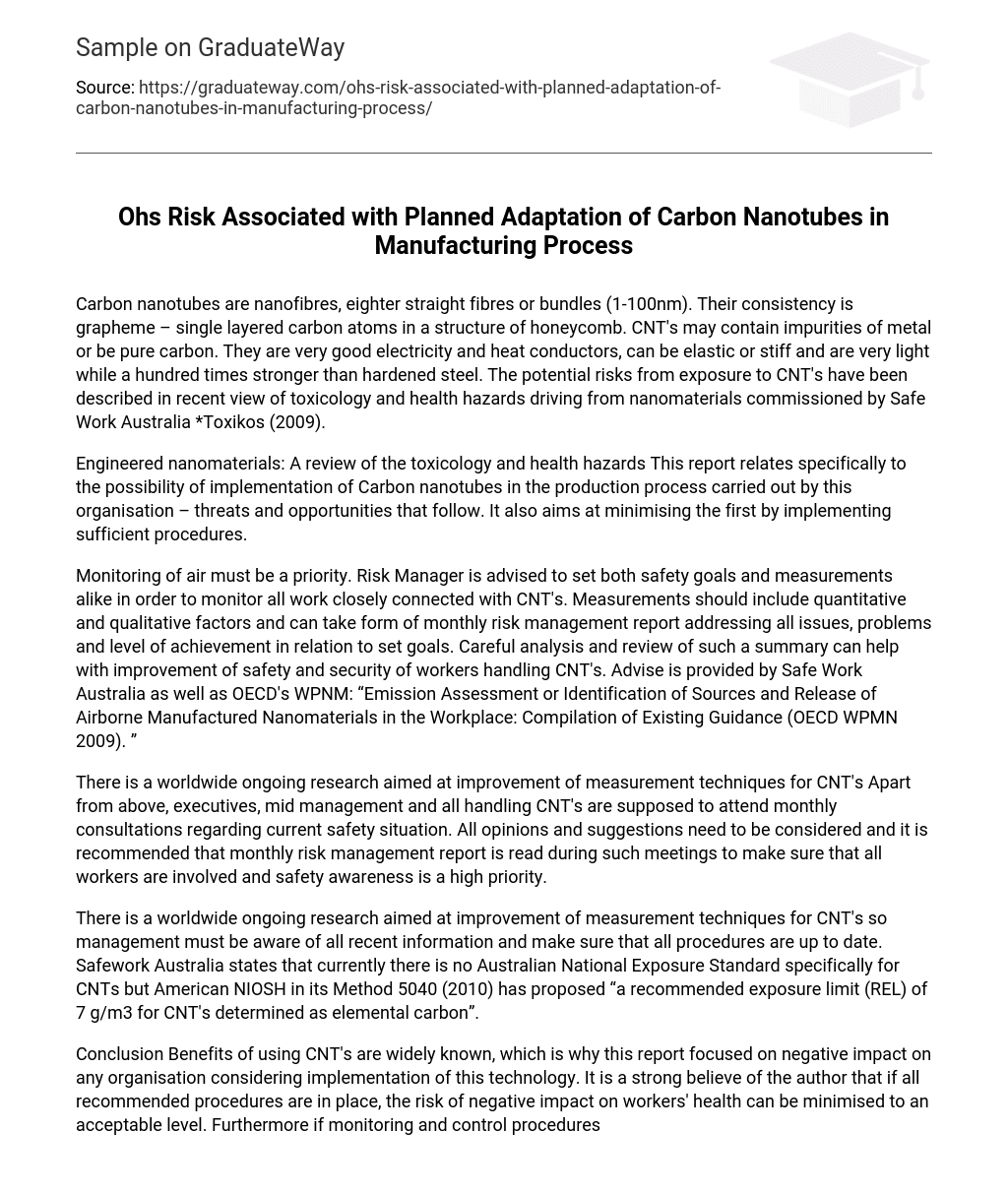Carbon nanotubes are nanofibres, eighter straight fibres or bundles (1-100nm). Their consistency is grapheme – single layered carbon atoms in a structure of honeycomb. CNT’s may contain impurities of metal or be pure carbon. They are very good electricity and heat conductors, can be elastic or stiff and are very light while a hundred times stronger than hardened steel. The potential risks from exposure to CNT’s have been described in recent view of toxicology and health hazards driving from nanomaterials commissioned by Safe Work Australia *Toxikos (2009).
Engineered nanomaterials: A review of the toxicology and health hazards This report relates specifically to the possibility of implementation of Carbon nanotubes in the production process carried out by this organisation – threats and opportunities that follow. It also aims at minimising the first by implementing sufficient procedures.
Monitoring of air must be a priority. Risk Manager is advised to set both safety goals and measurements alike in order to monitor all work closely connected with CNT’s. Measurements should include quantitative and qualitative factors and can take form of monthly risk management report addressing all issues, problems and level of achievement in relation to set goals. Careful analysis and review of such a summary can help with improvement of safety and security of workers handling CNT’s. Advise is provided by Safe Work Australia as well as OECD’s WPNM: “Emission Assessment or Identification of Sources and Release of Airborne Manufactured Nanomaterials in the Workplace: Compilation of Existing Guidance (OECD WPMN 2009). ”
There is a worldwide ongoing research aimed at improvement of measurement techniques for CNT’s Apart from above, executives, mid management and all handling CNT’s are supposed to attend monthly consultations regarding current safety situation. All opinions and suggestions need to be considered and it is recommended that monthly risk management report is read during such meetings to make sure that all workers are involved and safety awareness is a high priority.
There is a worldwide ongoing research aimed at improvement of measurement techniques for CNT’s so management must be aware of all recent information and make sure that all procedures are up to date. Safework Australia states that currently there is no Australian National Exposure Standard specifically for CNTs but American NIOSH in its Method 5040 (2010) has proposed “a recommended exposure limit (REL) of 7 g/m3 for CNT’s determined as elemental carbon”.
Conclusion Benefits of using CNT’s are widely known, which is why this report focused on negative impact on any organisation considering implementation of this technology. It is a strong believe of the author that if all recommended procedures are in place, the risk of negative impact on workers’ health can be minimised to an acceptable level. Furthermore if monitoring and control procedures are followed and ongoing research on CNT’s potential toxicity continuous at its present pace, there is strong believe in the scientific world that they can be reduced even further.





